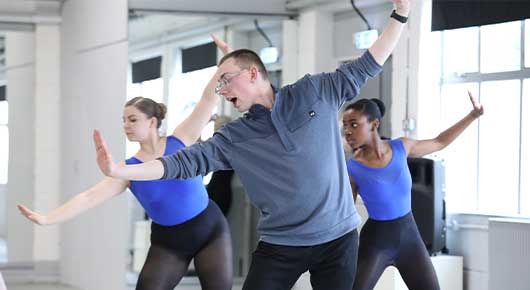8 June 2023
Why is dance important to you?
Dancing allows me to express myself and have a sense of belonging. It gave me confidence when I most needed it. It made me realise I needed to work harder in order to get the results I wanted. It taught me focus, perseverance, discipline, and self-respect. I learned to listen to and take care of my body and the importance of good nutrition, rest and routine. It taught me to respect and love my competitors, my teacher, my students and co-workers. Dancing gives me purpose and allows me to keep changing people’s lives, like it once changed mine.
Why is our charitable mission ‘to educate the public in the art of dancing in all its forms’ important?
Dancing brings people from different backgrounds together; it connects them at levels that words cannot express. By making dancing accessible to the general public it not only creates opportunities for different cultures to come together but also to share different ways of feeling and moving that enrich us all.
Have you experienced the power of dance to transcend social and cultural divides?
When I decided to compete with another male partner in mainstream dancesport events, most people were shocked and many were against it. It was clear that our partnership did not meet cultural and societal expectations. Secretly, the more rejection we experienced, the more I felt the need to educate and show our work to as many people as possible. The aesthetics may have been very different from what the majority was used to but I believe that when dancing is used to express universal emotions like happiness, anger, fear, or surprise, it knows no gender, sexuality, colour, ability or disability.

Gay-Games 2018 where Sergio Brilhante, together with his partner Eddie Alba, won the Gold Medal in the Same-Sex Latin and 10 Dance Men’s Same-Sex World Championships
How do you approach inclusion in your work?
I was lucky when I moved to London to have worked in two studios that were inclusive in the way they taught dance classes. Studio La Danza run by Heather Gladding and Hadas Armon, and Kensington Dance Studio run by Ralph Schiller and Kele Baker, had adopted the terminology of ‘Leaders’ and ‘Followers’, instead of ‘Man’ and ‘Lady’. This opened up the possibility that anyone could learn either role independently of their gender or sexuality. When I founded Freedom 2 Dance with Jonathan Morrison we adopted the same framework. We encouraged our students to take the ISTD Medals in both roles. We believed it made them better dancers and also more inclusive.
Please tell us a bit about how your practice embodies our values of quality, inclusion, innovation, passion or integrity.
The quality of tuition given by highly qualified fellows and examiners has always stood out for me. I believe that teaching qualifications are essential – a great dancer might not always be a great teacher. Quality has always been my top priority, which is why I chose to work with ISTD in the first place. I intend to take all my teaching qualifications to the highest level. I have always learned something new and extremely valuable from each of them. I also believe that continuous training in different areas is necessary in order to keep up-to-date with trends and developments in teaching.
What are your priorities for the future?
For the near future, one of my top priorities – and I believe for many out there – is to continue bringing new minds to dance. I am putting a lot of effort into marketing through social media, website, paid ads, and word of mouth. I am also creating new group classes to make dancing financially affordable here in Orange County. I will continue to work on my American Smooth and American Rhythm professional qualifications so I can share my experience.









